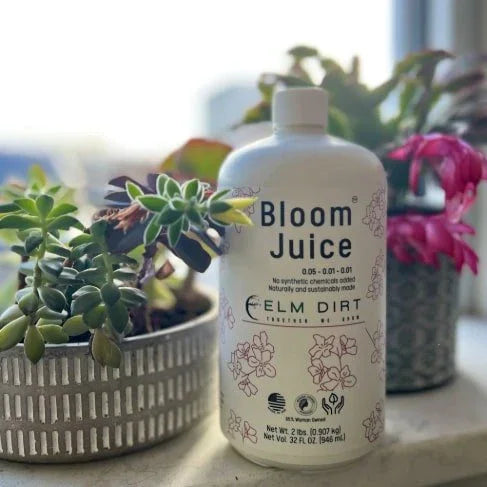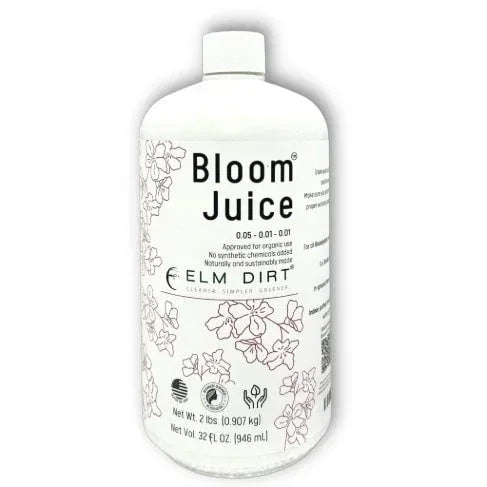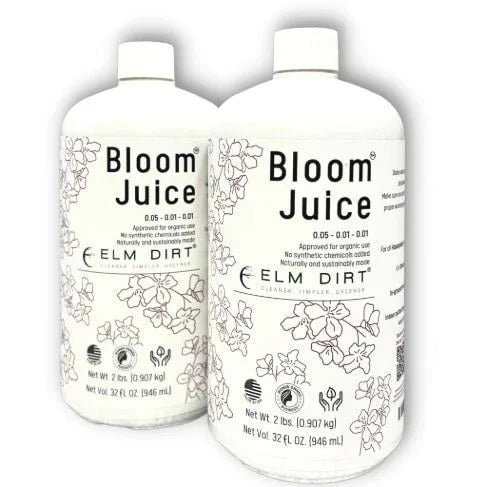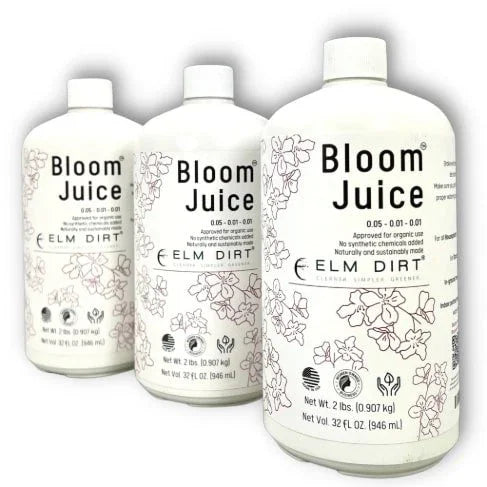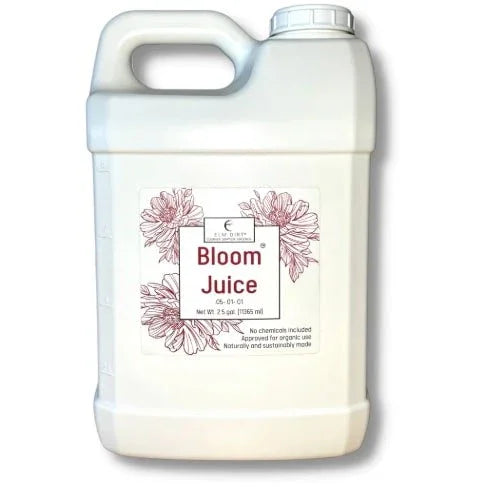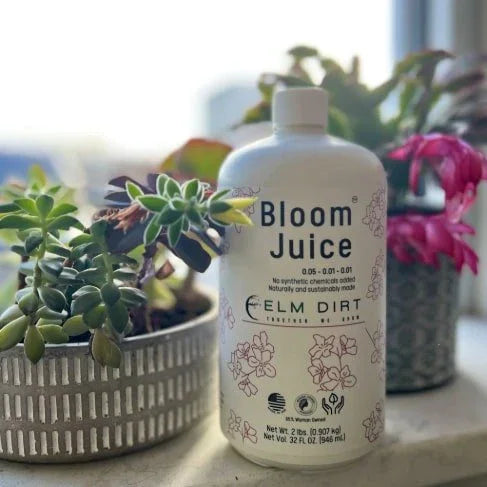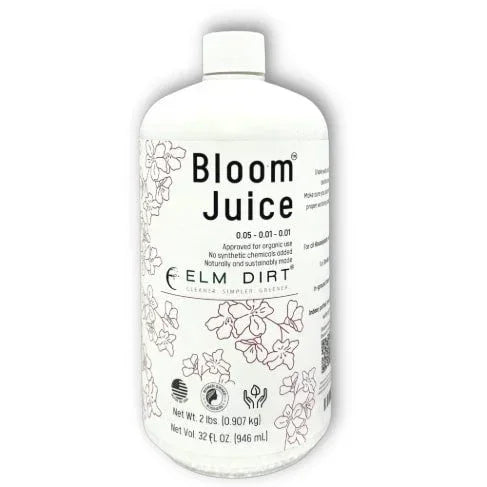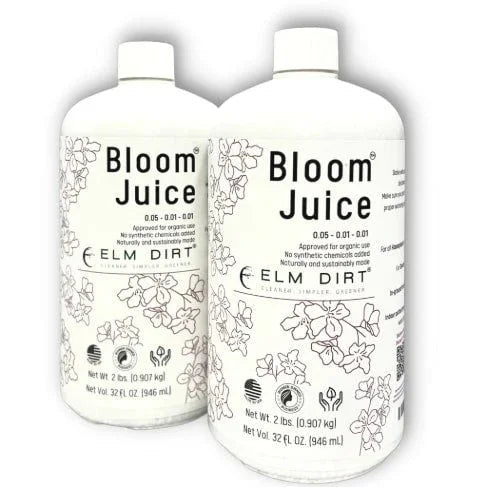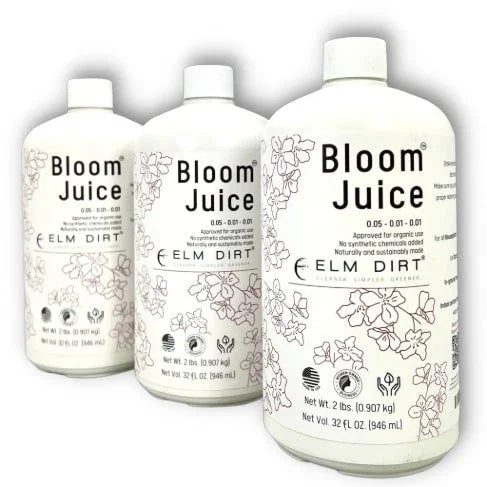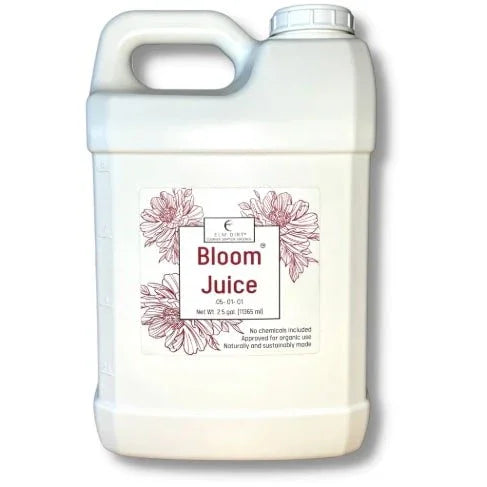Get Plants to Actually Bloom
Look, there are a million bloom boosters out there that promise more flowers. Most of them are just high-phosphorus fertilizers with fancy labels. This is different—it's a living liquid made from worm castings that's been brewed to multiply beneficial microorganisms.
The microbes colonize around plant roots and trigger flowering responses. The organic nutrients (phosphorus, calcium, iron) give plants what they need to produce blooms. And the whole system helps plants handle the stress of heavy blooming without falling apart mid-season.
Championship rose growers use this. Vegetable gardeners get bigger yields. Annual flowers keep pumping out blooms all season instead of petering out by July. It works because it's addressing what actually makes plants bloom—not just dumping fertilizer on them and hoping.
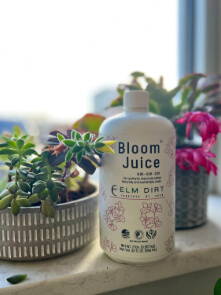
The Championship Rose Story
There's this rose grower in Missouri—serious competitive guy who'd been winning rose shows for years. Then someone applied the wrong chemicals to his rose bushes. Completely trashed them. Leaves burned, growth stunted, looked like they were going to die.
He started using Bloom Juice to try saving them. Not only did the roses recover, they came back stronger than before. He went on to win 57 ribbons at the Missouri State Rose Championship. That's not "better than nothing"—that's producing show-quality roses that beat other championship growers.
Why does this matter? Because if it works on chemically-damaged competitive roses that need to be absolutely perfect, it'll work on your tomatoes and petunias. Read the full story here.
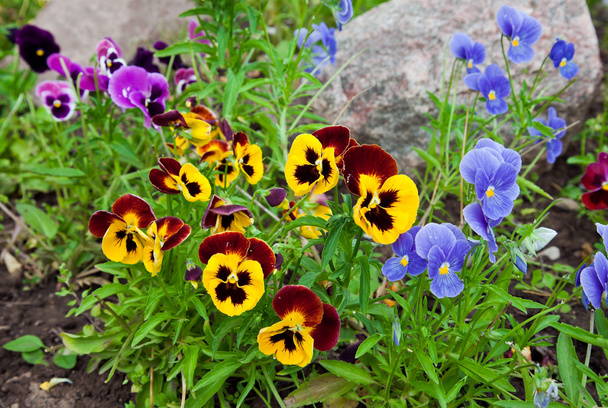
How Bloom Juice Actually Works
Triggers Flowering Response
- Proprietary microbe blend signals plants to bloom
- Increases number of flower buds produced
- Extends blooming period throughout season
- Helps plants set more fruit after flowering
- Works on vegetables, fruit, and ornamentals
The beneficial microorganisms colonize in the root zone and produce compounds that trigger flowering responses in plants. It's not just feeding them—it's actually signaling the plant to prioritize bloom production. You typically see increased bloom counts within 2-4 weeks of starting regular applications.
Strengthens Plant Structure
- Builds stronger stems and branches
- Supports heavy fruit without staking
- Reduces breakage from wind or weight
- Improves overall plant vigor
- Creates thicker, sturdier growth
One of the things growers notice first: stems get thicker and stronger. Tomato branches can support more fruit without bending. Rose canes hold up big blooms without flopping over. The combination of calcium, micronutrients, and living biology creates structurally sound plants that can handle the load of heavy blooming and fruiting.
Improves Stress Tolerance
- Helps plants handle drought better
- Reduces heat stress damage
- Maintains blooming during tough conditions
- Improves disease resistance
- Keeps plants productive through challenges
Plants under stress often stop blooming to conserve energy. Bloom Juice helps them maintain flowering even when conditions aren't ideal. The beneficial microbes improve root function and nutrient uptake, so plants can keep producing blooms during heat waves, dry spells, or other environmental challenges that would normally shut down flowering.
Living Liquid Technology
- Made from premium worm castings
- Brewed to multiply beneficial microbes
- Contains billions of living organisms
- Colonizes soil for lasting benefits
- Improves soil health over time
This isn't just dissolved fertilizer. We brew worm castings with specific ingredients to multiply beneficial microorganisms. The result is a living liquid that colonizes in your soil and continues working between applications. Each time you apply it, you're adding biology that improves soil health, not just dumping nutrients that wash away.
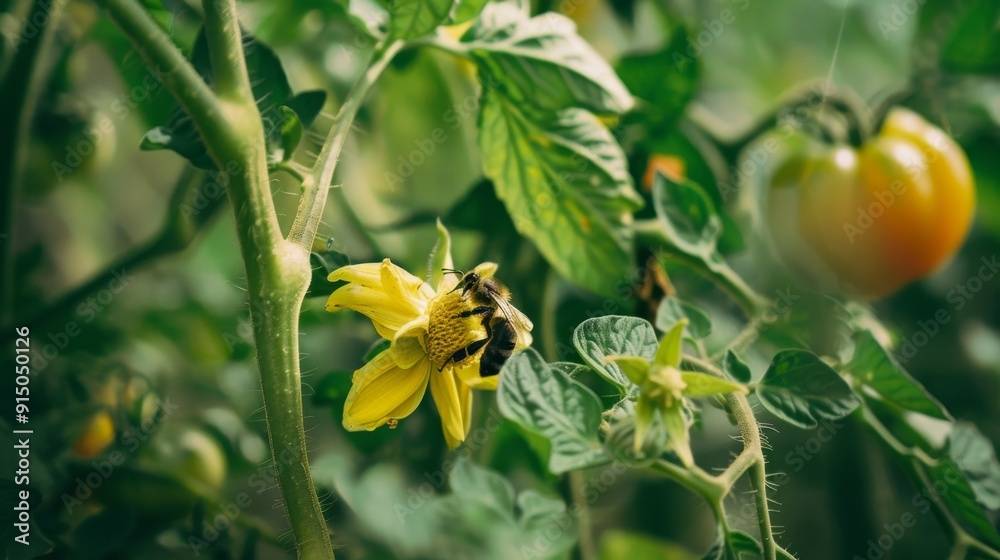
What's Actually in the Bottle
Bloom Juice starts with our premium worm castings—the same Class A certified stuff we sell on its own. Then we brew it with specific organic ingredients to create a living liquid fertilizer:
- Worm Castings: The foundation—provides beneficial microbes and balanced nutrition
- Kelp Meal: Natural growth hormones and trace minerals that promote flowering
- Bone Meal: High phosphorus for bloom and fruit development
- Seabird Guano: Rich in phosphorus and calcium for strong blooms
- Fish Meal: Complete nutrition with natural amino acids
- Lactobacillus Extract: Beneficial bacteria that improve nutrient availability
- Calcium Extract: Strengthens cell walls and supports bloom production
- Humic Acid: Improves nutrient uptake and soil structure
- Yucca Extract: Natural surfactant that helps nutrients penetrate soil and leaves
Everything is organic. No synthetic chemicals. The brewing process multiplies the beneficial microorganisms, creating a living product that's way more than just the sum of its ingredients.
About color and smell variation: This is a living, brewed product. Color can range from dark brown to almost black. Smell varies from earthy to slightly fishy. Texture might have some sediment. These variations are normal—the formula and beneficial biology are consistent even if appearance varies batch to batch. Shake well before using.
How to Use Bloom Juice
Application Methods
Bloom Juice is flexible—you can apply it several different ways depending on your situation.
Soil Drench (Most Common)
- Mix 2-3 oz per gallon of water (use dechlorinated water if possible)
- Water into soil around plant base out to the drip line
- Apply every 2-3 weeks during growing season
- For heavy bloomers (roses, tomatoes), can apply weekly
Foliar Spray
- Mix at same rate: 2-3 oz per gallon
- Spray leaves until dripping, covering both sides
- Apply early morning or evening to avoid leaf burn
- Faster nutrient uptake than soil application
- Great for quick correction of deficiencies
Hose-End Sprayer
- Attach 32 oz bottle directly to hose-end sprayer
- Set dilution to 2 oz per gallon (our sprayer comes preset)
- Spray evenly over garden beds or large areas
- Perfect for covering lots of plants quickly
Hydroponics
- Use 1/4 oz per gallon of nutrient solution
- Add to reservoir every 1-2 weeks
- Provides beneficial microbes even in hydro systems
Specific Application Rates
Houseplants & Garden Plants
Mix 2 oz per gallon of water. Apply every 7-14 days during growing season. In winter when most houseplants are dormant, reduce to once monthly or stop completely.
Roses & Shrubs
Mix 3 oz per gallon of water. Apply every 14-21 days. During peak blooming season, competitive rose growers sometimes apply weekly. Water deeply around the base and out to the drip line.
In-Ground Trees
Mix 1 cup per inch of tree diameter with 1 gallon of water. So a 6-inch diameter tree gets 6 cups of Bloom Juice mixed with 6 gallons of water. Apply twice per year—once in early spring as growth starts, once in early fall.
Potted Trees & Fruit Trees
Mix 1-2 oz per gallon per inch of trunk diameter. A 3-inch trunk gets 3-6 oz per gallon. Apply twice monthly during growing season. Reduces to monthly in winter.
Vegetables & Annual Flowers
Mix 2-3 oz per gallon. Apply every 2-3 weeks once plants start flowering. For heavy feeders like tomatoes, peppers, and squash, you can increase to weekly applications during peak production.
Dechlorinated Water—Why It Matters
Bloom Juice contains billions of living microorganisms. Chlorine in tap water kills microbes—that's literally what it's designed to do. If you mix Bloom Juice with chlorinated tap water, you're killing a significant portion of the beneficial biology.
Ways to get dechlorinated water:
- Let tap water sit: Fill buckets or watering cans, let sit uncovered for 24 hours. Chlorine evaporates.
- Use well water: No chlorine added, use directly
- Collect rain water: Free and perfect for this
- Buy dechlorinated water: Some garden centers sell it, or use aquarium dechlorinator drops
If you only have tap water available, Bloom Juice will still work—the organic nutrients are still there. You just won't get the full microbial benefits. Some benefit is better than no benefit.
Chloramine note: Some water systems use chloramine instead of chlorine. Chloramine doesn't evaporate like chlorine does. If your water has chloramine, you'll need aquarium dechlorinator drops or a different water source for best results.
What You'll See in Your Garden
Week 1-2: Initial Changes
Plants perk up. Leaves get darker green. New growth looks vigorous. You might not see bloom changes yet, but the plant is responding to the nutrition and beneficial microbes.
Week 3-4: Increased Blooming
This is when you start seeing more flower buds. Roses put out more canes with flower buds. Tomatoes set more fruit. Annual flowers start producing blooms more prolifically. The microbes have colonized and are triggering flowering responses.
Week 5+: Sustained Production
Plants maintain heavy blooming throughout the season instead of slowing down. Roses keep producing show-quality blooms. Vegetable plants keep setting fruit. Annual flowers don't peter out by mid-summer. This is where regular applications really shine—sustained performance over time.
Structural Improvements
Over several weeks, stems get noticeably thicker and stronger. Tomato plants support more fruit without staking. Rose canes hold up heavy blooms without flopping. Plants just look more vigorous and sturdy overall.
Perfect For These Plants
Roses
This is where Bloom Juice made its reputation. Rose growers see more blooms per bush, better disease resistance, healthier foliage, and show-quality flowers. If you're serious about roses—whether competitive or just want an amazing rose garden—this is worth trying. Mix 3 oz per gallon, apply every 2-3 weeks (or weekly during peak season).
Tomatoes
More flowers means more fruit. Stronger stems mean they can support those heavy heirloom tomatoes without breaking. Better stress tolerance means they keep setting fruit even during heat waves. Apply once flowering starts, continue every 2-3 weeks through the season. Many growers report noticeably larger yields.
Peppers & Eggplant
These heat-loving crops benefit from the stress tolerance and flowering trigger. They'll set more fruit and keep producing later into the season. The stronger stems support the weight of multiple large peppers without branches breaking.
Squash, Cucumbers & Melons
Vine crops that produce heavy fruit need strong vines and lots of flowers. Bloom Juice helps both. You'll see more female flowers (the ones that become fruit) and vines that can support the weight without collapsing mid-season.
Annual Flowers
Petunias, zinnias, marigolds, cosmos—whatever you're growing for color. Instead of strong early blooming that fades by July, you get sustained production all season. Deadheading still helps, but plants keep pumping out new flowers even without it.
Perennials
Daylilies, coneflowers, black-eyed susans, salvia, phlox—perennials bloom more prolifically and often extend their blooming period by a couple weeks. Some reblooming perennials will rebloom more reliably with regular Bloom Juice applications.
Fruit Trees & Berry Bushes
More flowers equals more potential fruit. Better stress tolerance means less fruit drop during challenging weather. Stronger branches support heavier fruit loads. Apply in early spring as buds form and again after fruit set.
Orchids
Many orchid growers use Bloom Juice to trigger reblooming and extend bloom duration. The microbes seem to help orchids that have been sitting dormant to produce new flower spikes. Use at half strength (1 oz per gallon) every 2 weeks.

When to Start Using Bloom Juice
For vegetables and annuals: Start when plants begin flowering. No point applying bloom booster before they're ready to bloom. Once you see first flowers, start regular applications.
For roses and perennials: Start in early spring as new growth emerges. This helps them develop strong structure before blooming and ensures beneficial microbes are established when flowering begins.
For fruit trees: Apply once in early spring as flower buds form, again after fruit set. The spring application helps with fruit set, the second application supports fruit development.
For established plants mid-season: You can start anytime. You'll see benefits within a few weeks regardless of when you begin. Plants already in bloom will produce more flowers on their next flush.
Can You Overapply?
It's hard to overdo it with Bloom Juice since it's organic and the nutrients release slowly. The worst thing that happens with overapplication is you waste product—not that you hurt plants.
That said, stick close to recommended rates for efficiency. More isn't always better. The microbial activity is what triggers flowering, and once those microbes colonize your soil, dumping more doesn't amplify the effect proportionally. Regular applications at proper rates work better than occasional heavy doses.
If you're trying to correct a severe deficiency or revive struggling plants, you can apply weekly for a few weeks to kickstart recovery. But for maintenance, every 2-3 weeks is plenty.
Storage and Shelf Life
Store at room temperature out of direct sunlight. The bottle is opaque to protect the microbes from UV light. Shake well before each use—some settling is normal.
Shelf life is approximately 1 year from manufacture date. After that, the microbial activity diminishes though the nutrients remain. The product won't go "bad" in a way that harms plants, it just becomes less effective over time.
If you notice a strong ammonia smell or the product looks or smells off, it may have gone anaerobic (no oxygen brewing). This is rare but can happen. Contact us for a replacement.
Don't freeze. Freezing can kill the beneficial microbes. If it accidentally freezes, let it thaw and use it—the nutrients are still good even if microbial counts are reduced.
Combining with Other Fertilizers
Bloom Juice works great alongside other organic fertilizers. Many growers use it with compost, worm castings, or other amendments. The beneficial microbes actually help break down and make available nutrients from other sources.
Can be used with synthetic fertilizers too, though some of the harsh salts in synthetics may reduce microbial activity. If you're using synthetics, you won't get full benefit of the living biology but the nutrients in Bloom Juice still work.
If you're using other liquid fertilizers, alternate them with Bloom Juice or apply them at different times (synthetic on Monday, Bloom Juice on Thursday, for example). Mixing them together in the same watering can is fine but not necessary.
Troubleshooting
Not Seeing Increased Blooms
Check basics first: Are plants getting enough light? Proper water? Most blooming plants need at least 6 hours of direct sun. If light is insufficient, no fertilizer will fix that. Also check if you're using dechlorinated water—chlorine kills the beneficial microbes that trigger flowering.
Product Smells Really Strong
Fish meal and seabird guano don't smell great. Some batches smell stronger than others. This is normal. The smell dissipates after application. If it smells like ammonia (sharp, chemical), that's different—contact us.
Sediment in Bottle
Normal. The organic ingredients settle. Shake well before use. If you can't get it to mix, let the bottle sit at room temperature for a few hours and shake again.
Environmental Considerations
The 32 oz bottles are made from 100% post-consumer recycled plastic. Remove the label and lid before recycling (they're different plastic types). The bottle itself is recyclable.
All ingredients are organic and safe for use around pets, kids, and wildlife once applied and watered in. Keep concentrate away from pets—the fish and guano smell may attract them to drink it, which won't hurt them but isn't ideal.
No synthetic chemicals means no harmful runoff into waterways. The beneficial microbes and organic nutrients are exactly what healthy ecosystems need.
Common Questions About Bloom Juice
How does Bloom Juice increase blooms?
Bloom Juice contains a proprietary blend of beneficial microorganisms that colonize around plant roots and trigger flowering responses. The phosphorus, calcium, and micronutrients provide the building blocks plants need for bloom production, while the living biology helps plants access those nutrients efficiently. Users typically see increased bloom counts within 2-4 weeks of regular application.
Can I use Bloom Juice on vegetables and fruit?
Absolutely! Bloom Juice works great on any plants that flower and fruit—tomatoes, peppers, squash, melons, fruit trees, berry bushes, everything. It helps trigger flowering (which leads to fruit production) and strengthens stems so they can support heavier fruit without breaking. Many vegetable gardeners see increased yields and larger fruit.
How often should I apply Bloom Juice?
Apply every 2-3 weeks during the growing season for best results. For heavy bloomers like roses or tomatoes, some growers apply weekly during peak blooming. Mix 2-3 oz per gallon of water and apply to soil around the plant base. You can also use it as a foliar spray for faster nutrient uptake.
Will this work on roses?
Yes! Bloom Juice was used by a championship rose grower who won 57 ribbons at the Missouri State Rose Championship after using it to revive chemically-damaged rose bushes. Rose growers report more blooms per bush, better disease resistance, healthier foliage, and show-quality flowers. Mix 3 oz per gallon for roses and apply every 2-3 weeks.
Do I need to use dechlorinated water?
For best results, yes. Chlorine in tap water can kill some of the beneficial microorganisms in Bloom Juice. Let tap water sit out for 24 hours to allow chlorine to evaporate, or use well water, rain water, or store-bought dechlorinated water. If you only have tap water available, Bloom Juice will still provide benefits from the nutrients, just with reduced microbial activity.
Can I use this as a foliar spray?
Yes! Foliar feeding delivers nutrients directly through leaves for faster uptake. Mix at the same rate (2-3 oz per gallon), spray leaves until dripping, and apply in early morning or evening to avoid leaf burn. Many growers alternate between soil application and foliar feeding for maximum benefit.
How long does a bottle last?
A 32 oz bottle makes 10-16 gallons of diluted solution depending on your mix rate. For a typical home garden with 20-30 plants, one bottle lasts most of the growing season with applications every 2-3 weeks. Larger gardens or weekly applications will use it faster.
Is Bloom Juice safe for organic gardening?
Yes! All ingredients are organic—worm castings, kelp meal, bone meal, seabird guano, fish meal, and natural extracts. No synthetic chemicals or fertilizers. Safe for edible crops with no wait time before harvest.
Get More Blooms from Every Plant
Award-winning organic liquid fertilizer with living microbes
Championship rose growers use this • Bigger yields • Stronger plants
Add to Cart
